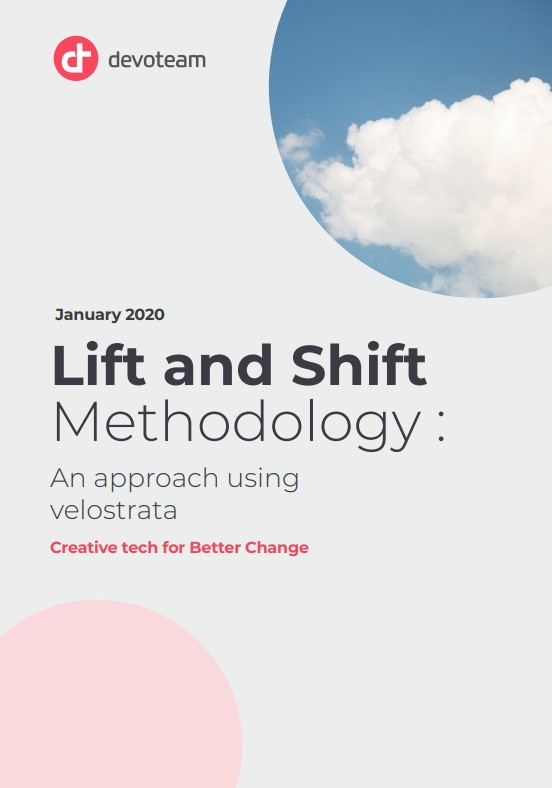Lift and Shift, also known as “rehosting” is a migration process where the main objective is to move a workload (and its associated data) to the Cloud with zero or minimal changes to the application architecture. Applications are “lifted» from the existing environment and “shifted as-is” to the cloud, without significant changes in architecture, data, or authentication mechanisms.
It is this feature that differentiates Lift and Shift and makes it, currently, one of the most used methodologies in migrating workloads to the cloud. By adopting this methodology, organisations are able to accelerate their cloud migration strategy, it is also less expensive when comparing to other processes.
In light of this, it is essential that organisations understand the contexts in which it is most advantageous to apply a Lift & Shift methodology and the benefits this choice has for their business. This was the intention of the authors when writing this paper, to focus on the Lift and Shift methodology in workload migrations to the Cloud, using the Velostrata automation tool.
We’ll start with a global analysis on the various migration strategies, looking to establish a pattern to guide users in choosing the most appropriate migration process for their workload. Next, we will introduce the use of tools to automate the Lift and Shift process, detailing the specific case of Velostrata, its features of accelerating the migration of the workload and mitigating the risk of migration. Since Velostrata is one of the tools made available by Google Cloud, it is natural to use the Cloud platform when elaborating in this document, however, we should point out that Velostrata is also compatible with other Cloud platforms.
In the last part of this paper, we try to give an overview of the entire process of implementing a Lift and Shift methodology, going through the steps such as; the interconnection of the on premise and cloud environments, the installation of Velostrata components in the various environments, the different phases of the migration process and the validations of the environment.
In a case study, two systems were chosen as workloads for migration to the Cloud:
LAMP System and Web Server IIS. By opting for these two systems, which are
based on different Operating Systems, we aimed to validate their behaviour after
the migration to the Cloud, verifying their functionalities at the SO LEVEL (Linux
and Windows) and services (LAMP and IIS).
Choosing a methodology for the migration process is a key step in any migration plan. The Lift and Shift approach is one of the fastest, least complex ways, with fewer risks and associated costs of migrating to the cloud, however, a solid strategy that is aligned with the organisation’s objectives is necessary, guaranteeing the use of the most appropriate tools and therefore the effectiveness of the methodology.

